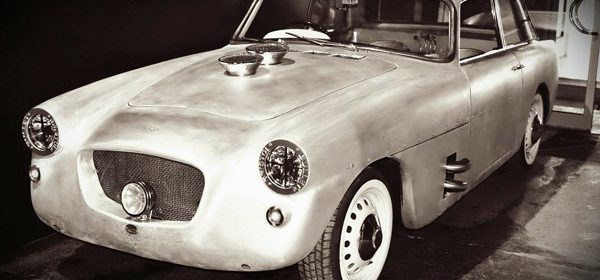How To Store Your Classic Car in 10 Steps (AKA Protecting Your Investment)


Inactivity can mean the death of a car. A car lying dormant can lead to countless, and priceless, damages: rubber rot, interior mildew, outer rust, engine parts seizing, short circuit wiring, paint bubbling, fiberglass cracking, chrome pitting, brakes freezing, and batteries dying. Many car collectors are shocked, after spending all Winter long California dreaming of cruising come Spring, to find their dream car has become a nightmare of problems over a short time in storage. Here’s how to give your “baby” the love it deserves…even when you’re NOT behind the wheel.
MATERIALS NEEDED FOR THIS PROJECT:
Car wash and wax
Rubber lubricant
Old gallon milk jugs (for storing drained fluids)
Baking soda and plastic bags
Grease (for lubricating fittings and pack wheel bearings)
4 jack stands 2×4 to depress clutch Tools (for removing the battery)
1 car cover
1. Life is in the details. The first act of love you can show your classic is to “detail” it thoroughly. Wash the dirt and road salts from the top AND bottom…get underneath there and scrub. Next, wax her down. Do NOT buff off chromed surfaces yet. This can wait until you remove the car from storage. Lubricate all it’s rubber parts and clean it’s upholstery. Vacuuming up any food crumbs will discourage animals (other than yourself) from getting some action in your back seat over the Winter.
2. Don’t forget to drain your fluids. Ideally, you should drain your car’s fluids while it’s still warm. When it is heated and circulating, oil picks up and emulsifies contaminants. That’s why you must ALWAYS WEAR A GLOVE to protect yourself from hot engine oil burns. NOTE: Make sure the oil contains corrosion protection.
3. Put fresh grease into your universal joints (don’t all our joints hurt if we stop exersizing them?) This only applies if your car has lube fittings. Put clean grease on all of the steering and suspension fittings and pack the front wheel bearings.
4. Let it Bleed…the brakes, that is. The best way to insure your baby against break deterioration is to drain your system of old fluids and refill with new ones.
5. Long term storage (6 months+) = drain the fuel tank. Once you’ve done that, start your car to run the rest of the gas out of the lines. Any old gas left behind can clog carburetors and valves. If you are only going to be storing your car for a few months, you can simply add a can of gasoline stabilizer instead.
6. Now Drain the cooling system, including the radiator, leaving the petcock open and the radiator cap off. This is so air can continue to circulate. Then, refill it with a rust-inhibiting antifreeze. Don’t forget to disconnect the heater hoses and drain the heater too. After this, all the car’s fluids should be completely drained. BE A FRIEND TO THE ENVIRONMENT: You MUST contact your local household and hazardous waste service for proper disposal!
7. The battery is the heart of your car, remove it carefully and store it well, if you want it to survive. Wash it down with water and baking soda, then rinse it off with distilled water. Store it off the ground, and in a dry place…but not on concrete. You can also hook it up to a battery charger/maintainer to keep the battery alive.
8. Raising the bar for storing your car…raise your car up and place jack stands under the suspension points. Remove the tires and stack them, placing cardboard between each one as you do so. Finally, cover tires to protect them from harm.
9. Lock it in the pocket (no, not that, get your mind out of the gutter!), Depress the clutch and lock it in position. To do this, press a 2 x 4 against the clutch and the front of the seat. This will prevent your clutch plates from sticking together in storage.
10. The last kiss goodbye, the final things you should do: Roll down your windows so air can circulate Open boxes of baking soda, to absorb moisture, and put them in various places inside the cab (mothballs will also work) Also keep moisture at bay by putting a plastic bag over the carburetor Stuff a rag up the tailpipe to keep out the critters Store convertibles with the top up. Convertible tops can shrink if they are left in the down position for an extended period of time.
Tuck your car in for a long Winter’s nap. When choosing a car cover, it’s very important to select the right kind of fabric. Cotton flannel fabrics breathe well, allowing air to circulate through them as well as being “cottony soft” and gentle on your paint job. On the other hand, cotton/polyester fabric blends trap heat and moisture. Plastic films don’t breathe at ALL and, therefore, should be avoided. They are a breeding ground…for rust…not like your car’s back seat, which might be a “Breeding Ground” of another kind…*smile*.
Check your insurance to be sure your car is covered throughout storage. “If the car is at least 15 years old and is driven less than 2,500 miles per year, it may be eligible for a collector’s policy, which can save you a significant amount of money,” says Jill Bookman of American Collectors Insurance, one of the nation’s leading providers of collector car insurance.
